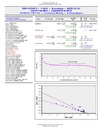Identificador persistente para citar o vincular este elemento:
https://accedacris.ulpgc.es/jspui/handle/10553/74532
| Título: | Late Miocene and Early Pliocene coastal deposits from the Canary Islands: New records and paleoclimatic significance | Autores/as: | Meco Cabrera, Joaquín Francisco Lomoschitz Mora-Figueroa, Alejandro Koppers, Anthony A.P. Miggins, Daniel P. Huertas, María J. Betancort, Juan F. Soler Onis,Emilio |
Clasificación UNESCO: | 250205 Paleoclimatología | Fecha de publicación: | 2020 | Publicación seriada: | Journal of African Earth Sciences | Resumen: | The Canary Islands offer an outstanding context for paleoclimatic studies because their volcanic nature and the presence of datable lava flows, their antiquity, the existence of marine deposits and their location in the NE Atlantic. New records of Miocene and Pliocene coastal deposits are registered in the eastern Canary Islands, 100 km off the NW African coast. Late Miocene marine deposits are conglomerates and sandstones assigned to the Tortonian through a new 40Ar/39Ar age (9.60 ± 0.05 Ma) of an overlying lava flow at the Janubio site in Lanzarote Island. These deposits contain littoral-intertidal and intertropical genera of fossils, e.g. the gastropod Nerita and the coral Siderastrea, they are almost horizontal and were elevated up to 36 m in height by regional or local tectonics, yielding a relatively low rate of uplift of ~3.75 m/Ma. Furthermore, Early Pliocene coastal deposits studied, are mainly marine conglomerates and sandstones and derived aeolianites that are spread over the south of Lanzarote and the west of the Jandía peninsula of Fuerteventura Island. No associated lava flow permits their dating, but they contain marine fossils of littoral and intertropical genera, as the gastropods Nerita and Persististrombus and the coral Siderastrea. They are all inclined toward the coast in the form of a large layer elevated up to 70 m a.s.l., in a surrounding geological environment with gypsum and aeolianites that indicate a eustatic sea-level fall with a regressive effect in the area. These deposits, previously attributed to the Quaternary, are now assigned to the Zanclean because of its similarity in lithology, appearance and fossil content with deposits in western Fuerteventura and NE Gran Canaria. The nearby existence of paleosols with particular structures indicates the start of climatic seasonality in the region; and the only possible time interval in a global context (record of deep-sea oxygen isotopes and sea-level history) fits in the most notable Pliocene global climatic change (~4 Ma) that is registered in the Canary Islands by mean of these coastal and aeolian deposits. | URI: | https://accedacris.ulpgc.es/handle/10553/74532 | ISSN: | 1464-343X | DOI: | 10.1016/j.jafrearsci.2020.103802 | Fuente: | Journal of African Earth Sciences [ISSN 1464-343X], v. 164, 103802, (April 2020) |
| Colección: | Artículos |
Vista completa
Citas de WEB OF SCIENCETM
Citations
3
actualizado el 08-jun-2025
Visitas
276
actualizado el 15-mar-2025
Descargas
455
actualizado el 15-mar-2025
Google ScholarTM
Verifica
Altmetric
Comparte
Exporta metadatos
Los elementos en ULPGC accedaCRIS están protegidos por derechos de autor con todos los derechos reservados, a menos que se indique lo contrario.


